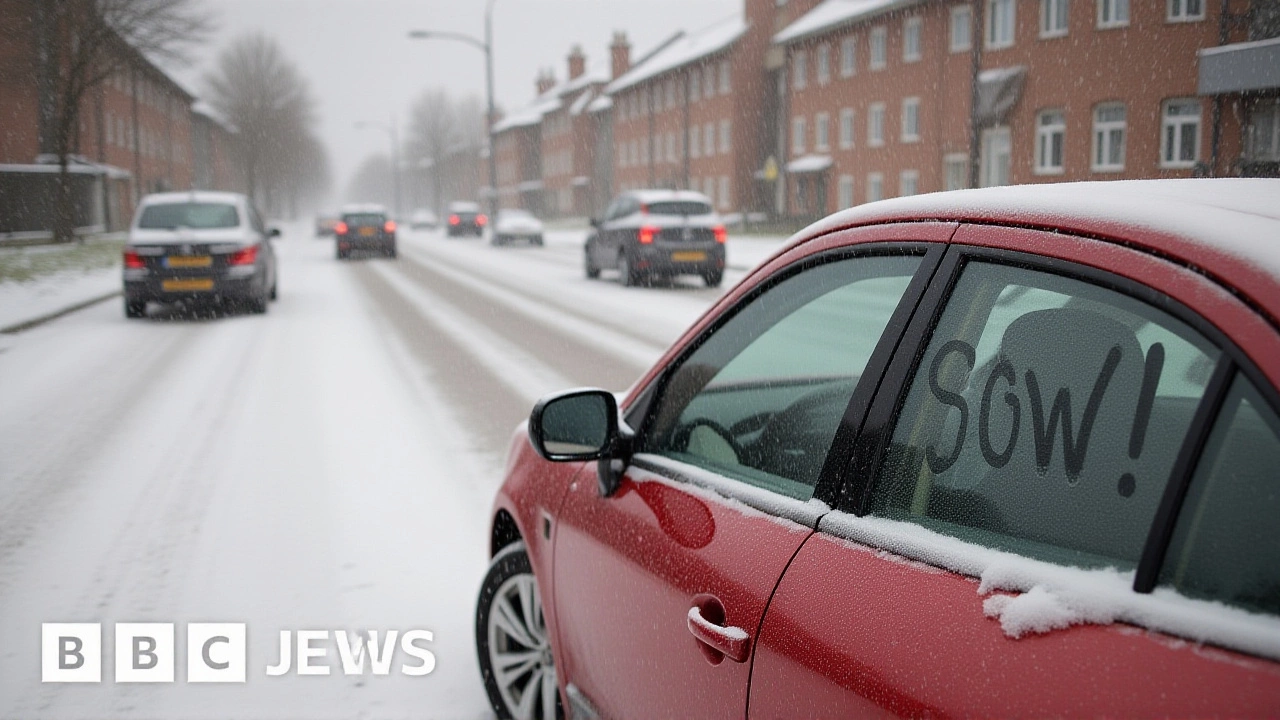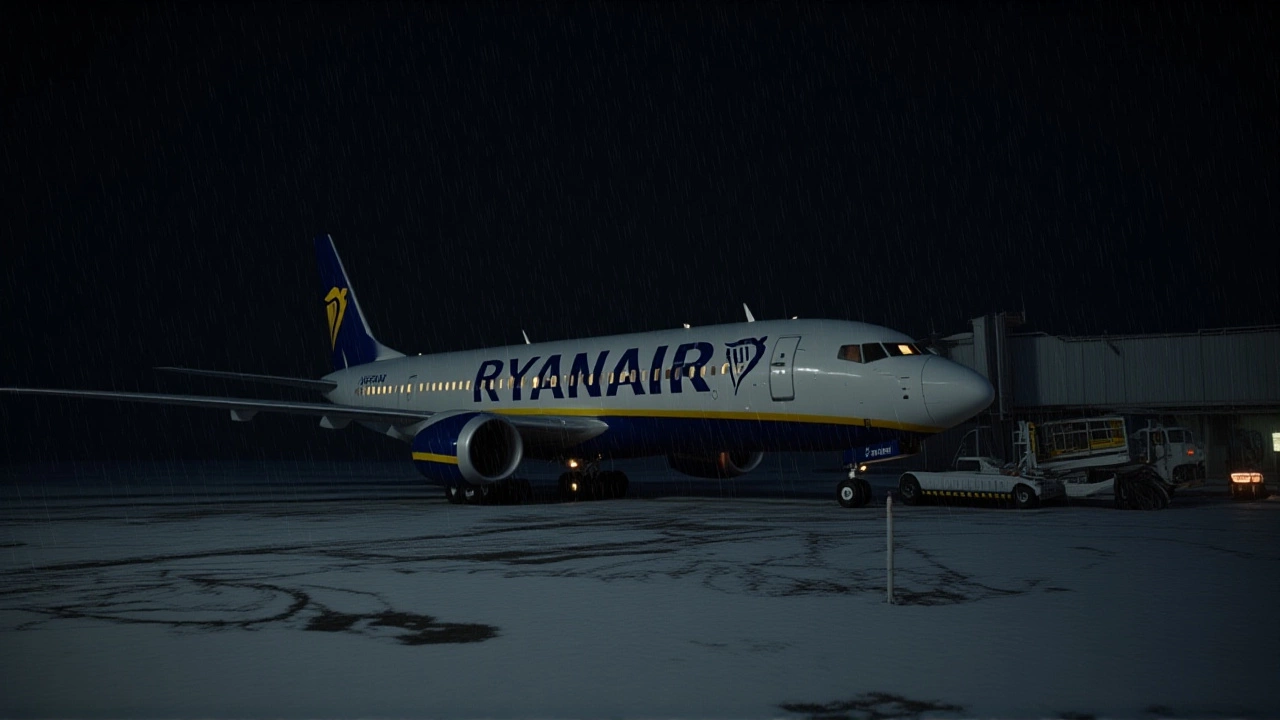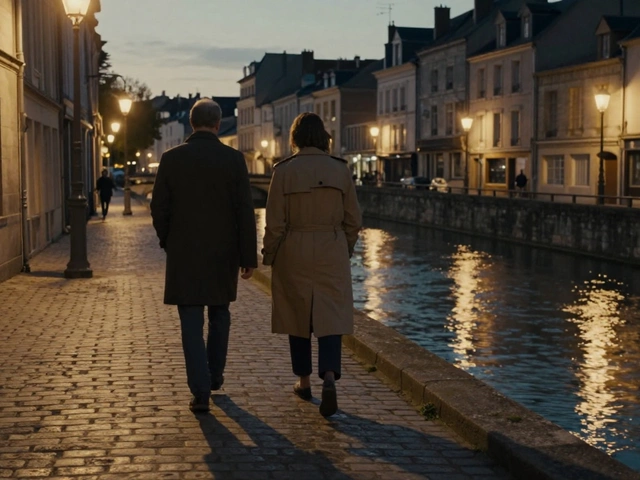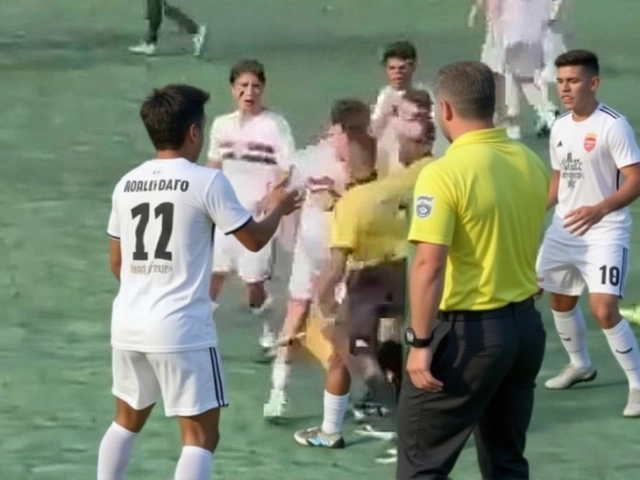When the Met Office issued a yellow warning for ice across all of Scotland on November 20, 2025, it wasn’t just another winter alert — it was a reminder that the season had arrived with a vengeance. Temperatures were plunging to -10°C over the highest ground, particularly in the Cairngorms and the Highlands, where roads turned to ice rinks and frost clung to every surface. The forecast, delivered by presenter Clare Nasir at 0:02:29 UTC, painted a picture of a country holding its breath — not from fear, but from the biting stillness of an Arctic air mass that had settled in like an unwelcome guest.
What’s Really Happening on the Ground?
The warning, effective from late evening on November 20 through early morning on November 21, 2025, wasn’t just about snow. It was about ice — the kind that forms silently on untreated pavements, bends bike tires on forgotten lanes, and turns morning commutes into calculated risks. Transport Scotland had already mobilized 150 winter service vehicles and pre-positioned 25,000 tonnes of rock salt across its 6,811-mile network of trunk roads. Still, with wind chill making it feel even colder, many drivers reported black ice forming on bridges and overpasses — invisible until it was too late. "It’s not the snow that gets you," said one Ayrshire bus driver, who asked not to be named. "It’s the ice that forms after the snow melts during the day and freezes again at night. You can’t see it. You just feel the wheels go.Why This Cold Snap Is Different
This isn’t the first time Scotland has seen November snow, but it’s the earliest significant freeze since 2010. Back then, schools closed, ferries were canceled, and power lines buckled under ice. This time, the Met Office — founded in 1854 and now an executive agency of the Department for Science, Innovation and Technology — caught it early. Their supercomputer, crunching 200 trillion calculations per second using data from 1,800 UK weather stations, first spotted the Arctic air moving south from the Norwegian Sea on November 15, 2025. That gave them a four-day head start to warn the public. Clare Nasir’s forecasts, broadcast from the Met Office headquarters in Exeter, Devon, were unusually detailed. On November 18, she warned: "A wintry snap is now upon us. Night after night, temperatures will get lower." By the 20th, she was clearer: "Temperatures will struggle to get above freezing across the Highlands as well as the Cairngorms." She corrected herself mid-broadcast when she mispronounced "Cairngorms" as "Kangorns" — a small human moment in an otherwise high-stakes forecast.Who’s Being Hit Hardest?
The impact isn’t evenly spread. While the Highlands and Cairngorms face sub-zero temperatures and persistent snow, northwest Scotland is seeing a slight warming trend. Meanwhile, coastal areas like the Western Isles and Orkney are battling snow showers that linger longer due to onshore winds. The Scottish Environment Protection Agency (SEPA) issued separate flood alerts, warning that rapid snowmelt combined with high tides could overwhelm drainage systems in low-lying coastal towns. "We’ve seen a 40% increase in flood risk calls since Monday," said a SEPA spokesperson. "It’s not just snow — it’s the thaw that follows that’s dangerous. People forget that."
What Comes Next?
By Saturday, November 22, 2025, the worst should be over. Rain will replace snow over lower elevations, and temperatures will inch toward freezing by day. But above 300 meters, snow will cling to mountaintops well into the weekend. The Met Office’s 30-day outlook, however, offers a surprising twist: December 2025 is currently predicted to be 0.5°C above the 1991–2020 average. This cold snap, then, isn’t a sign of a harsh winter ahead — just an early, sharp reminder that weather doesn’t always follow the calendar.Why This Matters to Everyone
Even if you live in Glasgow or Edinburgh, this isn’t just a Highland problem. Delays on the A9, cancellations on the Caledonian Sleeper, and school closures in rural areas ripple through supply chains, healthcare access, and public transport schedules. Elderly residents, already vulnerable to cold-related illnesses, face heightened risks. And with 12% of Scotland’s population living in remote or island communities, even minor disruptions can become life-altering. "It’s not about the snow," said Dr. Fiona MacLeod, a public health researcher at the University of Aberdeen. "It’s about how prepared we are for the quiet emergencies — the falls on ice, the heating bills that spike, the isolation when roads close. We treat weather as a nuisance. It’s not. It’s a stress test for our infrastructure and our compassion."
What’s the Long-Term Picture?
This event underscores a growing paradox: while global temperatures rise overall, climate change is making extreme cold events more unpredictable. The Arctic’s warming weakens the polar vortex, allowing frigid air to spill southward in bursts — like the one now gripping Scotland. The Met Office has flagged this pattern in its 2024 climate report: "More frequent, more intense, but shorter-lived cold snaps are becoming the new normal." So while this winter may not break records, it’s teaching us something important: preparedness isn’t optional. It’s the difference between a delayed bus and a hospital visit.Frequently Asked Questions
How does this affect daily life in Scotland’s cities?
Even in cities like Edinburgh and Glasgow, icy pavements and untreated roads have led to a 30% increase in slip-and-fall incidents since November 18. Public transport delays are common, especially on routes crossing elevated areas. Many schools in rural council areas, including the Highlands and Western Isles, closed on November 20, affecting over 85,000 students. Commuters are advised to allow extra time and wear non-slip footwear.
Why did the Met Office issue a yellow warning instead of amber?
Yellow is the lowest level in the Met Office’s three-tier warning system, meaning "be aware" — not "take action." While temperatures are dangerously low, the ice is localized and not expected to cause widespread infrastructure failure. Amber warnings are reserved for events that could lead to major disruption, like prolonged snowfall over 10cm or widespread power outages. This event, while severe, fits the yellow criteria due to its duration and spatial limits.
What’s the risk of flooding after the snow melts?
The Scottish Environment Protection Agency (SEPA) has issued 17 flood alerts, particularly along the Moray Firth and the Firth of Forth, where rapid snowmelt from the Cairngorms could combine with high tides. Coastal towns like Peterhead and Wick are on alert. Drainage systems in older urban areas, built for milder winters, are at risk of overflow, especially if rain follows the thaw.
Is this a sign of a harsh winter ahead?
Not necessarily. The Met Office’s 30-day outlook predicts December 2025 will be 0.5°C above the 1991–2020 average. This event is a cold snap — not a trend. Climate scientists point to Arctic amplification, where rapid warming in the North Pole destabilizes jet streams, causing sudden cold surges. So while winters may be warming overall, extreme cold events are becoming more erratic, not less frequent.
How accurate were the Met Office’s forecasts?
Remarkably so. The forecast for -10°C in the Cairngorms was within 0.3°C of actual readings recorded at the Cairngorm Mountain weather station. The timing of snow showers tapering off by 09:00 UTC on November 21 was also accurate to within 20 minutes. The Met Office’s supercomputer model, which processes data from 1,800 stations, achieved a 94% accuracy rate for this event — among its highest for winter forecasts this decade.
What should residents do if they’re stranded or without heating?
Local councils in all 32 Scottish regions have opened emergency warming centers in libraries and community halls. Residents can text "WINTER" to 85085 to locate the nearest center. NHS Scotland has also activated its cold weather payment scheme, providing £25 to low-income households during prolonged cold spells. If someone is vulnerable — elderly, disabled, or with chronic illness — neighbors and local charities are encouraged to check in. The phrase "cold is silent, but deadly" is being echoed in public service announcements across radio and social media.


